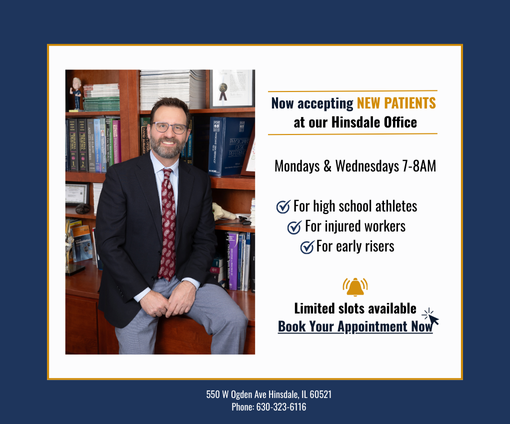 Online appointment scheduling is easy, convenient anytime on any device
Online appointment scheduling is easy, convenient anytime on any device
Home / Knee Surgeon Chicago Illinois / Arthroscopic Meniscectomy
Surgery is indicated for people who have symptomatic tears of the meniscus. Meniscal tears can cause pain in the knee as well as mechanical symptoms including locking, catching, intermittent sharp pains, and sometimes even giving way.
Only the outer 10 to 30 percent of the meniscus has a blood supply that is required to allow tissues to heal. Because of this limited blood supply and limited ability to heal and repair itself, the meniscus tends to develop degenerative tears (from “wear and tear”) over time. The majority of meniscal tears are generally degenerative but sometimes a single injury can suddenly extend a developing tear, causing it to become symptomatic (painful). Unfortunately, because of the instability (movement) of the torn fragment of the meniscus and its limited blood supply, meniscal tears generally do not heal or regenerate themselves. Also, because of this limited blood supply and the fact that a majority of tears are degenerative in nature (“beat-up” without clean edges that can be sewn together), most meniscal tears cannot be repaired and require arthroscopic partial meniscectomy (removal of the torn and damaged portion of the meniscus).
The goal of meniscal surgery is to eliminate the symptoms in your knee by removing only the torn and damaged portion of the meniscus. Dr. Steven Chudik, arthroscopic knee specialist, removes the torn portion of the meniscus arthroscopically and contours (smooths) the edges of the tear can prevent progression of the tear (increasing in size) and displacement of the tear, which causes the painful mechanical symptoms of catching, locking or giving way.
Learn More “Thank you Dr. Chudik for treating Jacob so he could pursue his wrestling goals…The Curby Family.”
“Thank you Dr. Chudik for treating Jacob so he could pursue his wrestling goals…The Curby Family.”
Dr Steven Chudik founded OTRF in 2007 to keep people active and healthy through unbiased education and research. Click to learn about OTRF’s free programs, educational opportunities and ways to participate with the nonprofit foundation.
1010 Executive Ct, Suite 250
Westmont, Illinois 60559
Phone: 630-324-0402
Fax: 630-920-2382
(New Patients)
550 W Ogden Ave
Hinsdale, IL 60521
Phone: 630-323-6116
Fax: 630-920-2382
4700 Gilbert Ave, Suite 51
Western Springs, Illinois 60558
Phone: 630-324-0402
Fax: 630-920-2382

© 2025 © 2019 Copyright Steven Chudik MD, All Rights Reserved.

